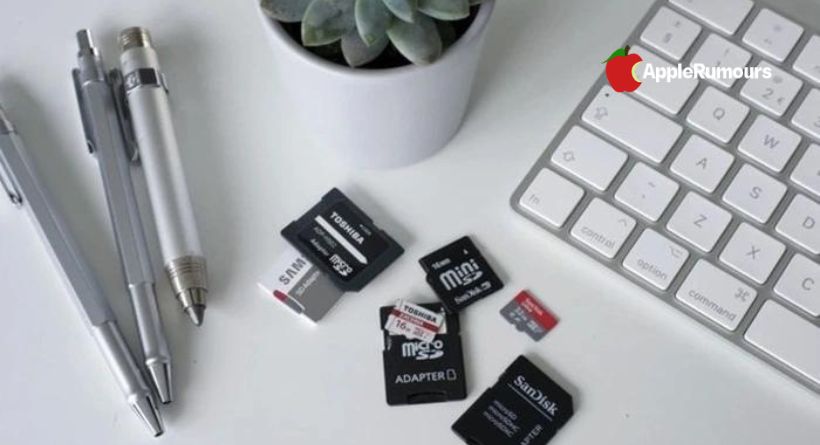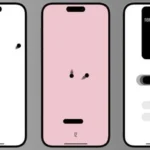If you’re wondering how to use your Apple Mac computer to format your camera’s SD card or set up storage for your Raspberry Pi micro PC operating system or anything similar, read on. You’ll be happy to know that format SD cards on MacOS operating system is fairly simple, especially if your Mac has an integrated SD card slot reader. This short tutorial will demonstrate how to format an SD card on a Mac desktop or laptop.
The SD Association (SDA) created the Secure Digital or SD non-volatile flash memory card format specifically for portable devices. SD storage cards provide an economical storage option that is available in a broad range of various capacities and may be used for a variety of different devices, including cameras and tiny PCs.
SD cards provide a practical means to store and transmit data, images, media, and documents. They also make it simple to easily install various operating systems onto various devices, including the Raspberry Pi and Arduino micro-controllers.
The compact storage cards may be read with an SD card reader through a hub or utilizing an extra USB connection. This year, Apple added SD card ports to their new lineup of MacBook Pro notebooks, making it even simpler to retrieve photos and videos taken with your cameras or to format the SD cards for use with other programmes.
Format SD cards on Mac
For a variety of devices, including your Mac’s smartphone, Raspberry Pi tiny PC, Arduino project, digital camera, or gaming console, you might need to format an SD card or micro SD card. It is really simple to prepare a card for usage on your Mac computer. When formatting an SD card for the first time on a Mac, there are a few options to be aware of. Don’t forget that formatting your SD card or micro SD card will erase all the data on them, so be sure to back up any information you might wish to save before formatting your SD card.
Correct format to choose
We’ll format our SD card on our Mac computer using the “Disk Utility” tool that Apple includes with every Mac. You could already have an inbuilt SD card port on your iMac or earlier MacBook laptop, which you can use to read and write data to your card with ease. An SD card USB-C converter that fits into a spare USB-C port is required if you own a contemporary MacBook or MacBook Air without an SD card slot. You will also need an SD card sized adaptor, which you will fit the smaller microSD into as seen in the figure below, to format the smaller form factor microSD cards.
Press the Command and Space buttons on your Mac keyboard to open “Spotlight search,” then type “Disk Utility” to find and run the programme after inserting your card into your Mac computer, either directly or through an SD card adapter, as seen in the image above.
Using Disk Utility
Your drives are listed on the left-hand side of the Disk Utility programme. Make sure you choose the right drive when formatting an SD card. Simply taking out and replacing the memory card will allow you to quickly verify which drive vanishes and reappears when your Mac reads the card. When you right-click on the SD card drive of your choice, a list of options will appear, with “Erase” listed at the bottom. We will choose the ‘Erase’ option to format our SD card on the Mac.
You can see a list of your drives on the left-hand side of the Disk Utility program. When formatting an SD card, be sure to choose the appropriate drive. To quickly verify which drive disappears and reappears as your Mac reads the memory card, just remove it and reinstall it. ‘Erase’ will be listed at the bottom of the list of options when you right-click on the SD card drive of your choice. In order to format our SD card on a Mac, we will choose the option labelled “Erase.”
On a Mac, there are four “Format” options available when formatting a card: MS-DOS (FAT), ExFAT, and MacOS Extended (Journaled, Case-sensitive). The OS Extended formats are the best option if you intend to use the formatted SD card ONLY on devices running Apple’s macOS operating system. The ‘Case-sensitive’ option, which takes capitalization into account, is the only difference between the two. Accordingly, ABC and abc are regarded as different names in the case-sensitive option. They are regarded as being identical in the non-case-sensitive MacOS Extended (Journaled) format.
If your SD card capacity is greater than 64 GB and you are formatting the SD card on a Mac system running a modern operating system version of macOS: Apple Lion macOS and above, you will use the ExFAT option. These examples include using your SD card in a digital camera, Windows PC, Android smartphone, or Raspberry Pi mini PC. Use the MS-DOS (FAT32) option if your Mac is older and your SD card is smaller in size.
SD card format instructions :
- Launch the Mac’s Disk Utility programme.
- Choose the appropriate SD card drive
- Name your SD card.
- Choose the preferred Format Type: general intent Only Mac machines support ExFAT: OS X Extended (Journaled)
- Select “Erase” from the menu.
- Wait for the Mac’s SD card format to be finished.
- Take your SD card that has just been formatted out of the computer.







